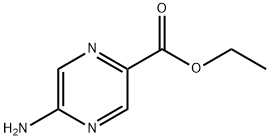What are the unique advantages of the newly developed gelatin-based hydrogel over traditional treatment methods in terms of tissue adhesion and adaptation to irregular shapes? And how does the release of drug-modified starch particles contribute to its enhanced performance in promoting tissue repair?What are the long - term effects of using this bioengineered gel on human health? Will it cause any adverse reactions or immune responses over time? Also, compared with existing tissue repair methods, what are the economic and practical limitations of mass - producing and applying this hydrogel in clinical settings?
Revolutionary Hydrogel Breakthrough: Can This Bioengineered Gel Mend Human Tissue Damage for Scar-Free Healing?
Related Encyclopedia
Related Products More >
-
- CNY equest For Quotation
-
- CNY equest For Quotation
-
- CNY equest For Quotation
-
- 55589-62-3
- CNY 9.0000
- 25kg
-
- 26048-69-1
- CNY 5.0000
- 25kg
-
- 9000-70-8
- equest For Quotation
- 25kg
-
- 9000-70-8
- equest For Quotation
- 500g
-
- 9000-70-8
- equest For Quotation
- 1ton



 沪ICP备2021018848号-5
沪ICP备2021018848号-5

Now, let's talk about these drug - modified starch particles. They're like a "secret weapon". When the hydrogel is in an environment similar to the human body's physiological conditions, it will release these particles. They're like a group of hard - working little helpers. Working together with the hydrogel, they build an improved material interface with human tissues both inside and outside the body. This interface is really important. It can stimulate cell growth and accelerate tissue regeneration, just like pressing the "fast - forward button" for tissue repair, making the hydrogel even more effective in promoting tissue repair!
We only know that its biocompatibility is pretty good, which sounds great, but who knows what will happen in a few years or even a decade? It also doesn't mention whether it will cause any adverse reactions or immune responses over time. Although animal experiments have shown that it can effectively accelerate skin wound healing, control colitis symptoms, and promote heart tissue regeneration, animals are not humans after all! We definitely need to conduct more long - term studies on humans to figure these things out.
Now, let's talk about mass production and clinical application. Compared with existing tissue repair methods, there are likely to be some economic and practical difficulties. First of all, developing and producing this hydrogel is probably quite costly. After all, we need to make a material with special abilities, like being able to release particles and change its form. There's a lot of money spent in the research, development, and production processes. Also, in actual operation, it's not easy to ensure the consistent quality during mass production. And to get it approved for widespread use in clinical settings, the approval process will definitely be long and troublesome, because it has to meet very strict safety and efficacy standards.